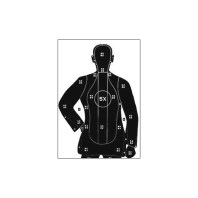Like most of us, I’m sick and tired of the alt-right’s attack on mainstream media by calling it ‘fake news.’ Talk about the pot calling the kettle black, or worse. But every once in a while our friends in the real news media get it wrong, and this seems to happen frequently when the issue involves guns. Which is not surprising given the fact that liberals and educated folks in general are usually not that versant with guns or gun cultures, which is all the more reason they should be extra careful when they wander onto the gun-owning/using turf.
An example of this lack of knowledge about guns came out today in an NPR story about background checks in which the writer, Uri Berliner, used the latest FBI-NICS check numbers to craft an article about the post-Trump decline in gun sales. Now young man Berliner has some impressive journalistic creds; according to the NPR website, he is part of the Planet Money team and previously worked as a reporter for the San Diego Union-Tribune. All of which I am sure has given him lots of experience in how to research a story before he sends it out. But this particular story, unfortunately, shows little, if any understanding about trends in the gun business at all.
What Berliner has done is taken the most recent news release from the FBI which gives the overall number of background checks for the previous month, and then assumed without bothering to look at the actual data, that each background check equals the transfer of at least one gun. His story contains a neat little graphic which shows that monthly background checks have declined from 2.8 million in December to 2.2 million last month, numbers that are far below comparable monthly numbers for 2015. I reproduce the graphic here:
There’s only one little problem. Berliner is using overall background check numbers (which is what the FBI uses in its press releases because it would like you to know how hard they are working down in West Virginia) which do not distinguish between background checks for gun transfers as opposed to background checks for gun license applications, concealed-carry permits and guns taken out of pawn. You see, the FBI-NICS system isn’t just utilized to make sure that a dealer isn’t putting a gun into the ‘wrong hands.’ It’s also used by law enforcement agencies who don’t have the ability to determine whether a resident of their state applying for a gun or CCW license hasn’t committed a disqualifying crime in some other state.
Had Berliner taken the trouble to look at the actual FBI-NICS data which can be seen here, he would have discovered that of those 2.2 million background checks processed in February, more than half had nothing to do with gun transfers at all. In fact, February, 2017 was the first month that background checks for something other than gun transfers actually exceeded background checks on guns since the FBI started breaking out their numbers back in 1998. And when you examine the background check data in detail, what jumps out is the degree to which the sale of guns (using NICS as a proxy) has declined much more than what the NPR story would lead us to believe.
I’m not saying that Berliner is incorrect when he claims that the gun industry is in the midst of a post-Trump slump. But let’s remember that the whole background check issue is the Numero Uno issue being discussed and debated among organizations that seek to reduce gun violence and believe that expanding background checks is a proper way to proceed.
You would think that NPR would at least understand the necessity of verifying the data which they use to construct a story based on background checks. You would think that the gun violence prevention (GVP) community would want to understand what the data actually means.
You would think….

 It turns out, according to our intrepid Trace reporter, that 26 states have no live-fire training or live-fire certification of any kind. In other words, you can walk into a gun shop and buy a gun, walk out with the gun in your pocket to protect yourself from all those street thugs, having never actually fired that gun, or any gun for that matter. And Gun-nut Nation has the absolute, unmitigated gall to reject mandated gun training while, at the same time promoting the idea that ‘armed citizens’ protect us from crime. Oh well, we have a President who says with a straight face that cutting 40 million people off of medical insurance will make us healthier all around, so why shouldn’t the NRA tell just as big a lie when it comes to talking about guns?
It turns out, according to our intrepid Trace reporter, that 26 states have no live-fire training or live-fire certification of any kind. In other words, you can walk into a gun shop and buy a gun, walk out with the gun in your pocket to protect yourself from all those street thugs, having never actually fired that gun, or any gun for that matter. And Gun-nut Nation has the absolute, unmitigated gall to reject mandated gun training while, at the same time promoting the idea that ‘armed citizens’ protect us from crime. Oh well, we have a President who says with a straight face that cutting 40 million people off of medical insurance will make us healthier all around, so why shouldn’t the NRA tell just as big a lie when it comes to talking about guns?